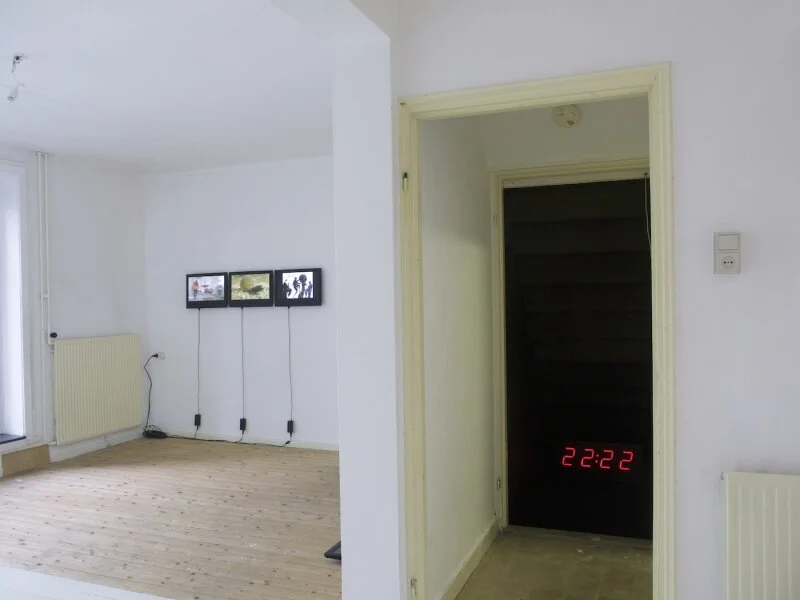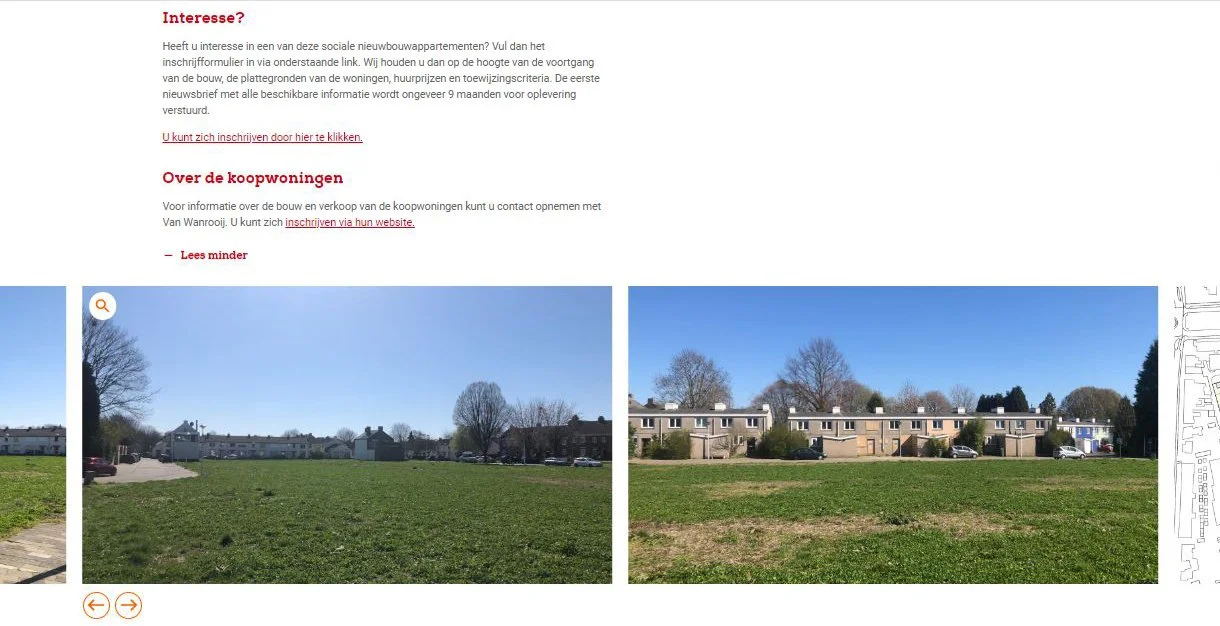CABERG COLLECTION
Member
Two out of our three Arthurs play music, recently with Robbert, Yves and Edis, otherwise with Sander, Emanuel and Martijn. Julia is into fashion, as are Ingo, Sonja and Branko. Daantje and Tiny philosophize, Matylda is everywhere but here, while Jonas and Julia ain’t livin in California, yet. Jörg teaches, Joep, Joost and Eva, too. Henning is still a student and Charlotte and Thomas are students again. Dirk and Henry own their own business and Marjolein is setting one up right now. Willem paints, always and everywhere, José paints too, but on a smaller scale. Sanne likes snails and Gries likes cats, we all love James. Miriam knows coffee and that Marie favors decaf soy latte. Fabian just moved here together with Charlotte though she is in New York right now. Maartje and Ingo already toured through Asia three times, Brenneke and Jimmy will move there soon. Nika keeps bees, Kim, Tim, Yves and Lisanne own a graphic atelier, Lonneke has Luca, Julie and Maurits are blessed with Isra, and Lynn and Maarten with Lore. Lyanne and Yvonne are bike messengers, Felix is a photographer. Lukas and Max both work with wood and Jan works with words. Patrick knows numbers, Stefan is an architect, Roos an acupuncturist and Rebecca an artist. Marielle is a yogi and Arek a freestyler. And Lynn does the hulahoop. Together, we formed the Caberg Collection and fought against the scheduled demolition of our houses with the means we know: art.
Starting in 2005 the first artists and musicians signed the first “gebruiksvergunningen” (license for use) with one of at that time first vacant property managers within the Dutch system of “Anti-Kraak” (anti-squat), where one pays just a certain percentage of the former rent, but looses any sort of tenant protection. The property manager will enter your house on a monthly basis, as one is not a tenant, but a temporary occupant or user. Eviction can take place at any moment with a two week notice, as soon as the property value has increased enough or the right subsidies are set in place, that makes demolition of the neighborhood, the sale of the land or the construction of new houses more profitable for the investor, in our case a social housing corporation. Within the 15 years of its existence, tens of bands and businesses have started in the streets of Caberg. Since housing was enabled at an affordable price, the Cagirls and Caboys could focus their energy on the needs of their different businesses: fashion designers started renting shops in the city center, artists and designers studios for their 600kg printing presses and machinery, while curators, dancers and musicians travelled the world. We can say with certainty that at a certain point the cultural industry in Maastricht was somehow connected to Caberg and facilitated by the hundreds of people that have lived in its 110 houses throughout the years. A proposal to sustainably renovate the houses in a co-creation trajectory, whereby the initiative of the Caberg Collection would have been supervised by the University of Maastricht on the project trajectory and by the Hogeschool Zuyd in legal terms, which would have been supported with European Interreg Fuding, was rejected by the social housing corporation in the fall of 2016.
The 110 social rental houses of around 90 m² with four rooms and with a +/- 20 m² garden each, will be replaced 35 owner-occupied homes in the pricerange of € 345.000 - € 498.000, developed by a company selling kitchens, bathrooms & tiles. In a second phase 50 social rental apartments will be build by the social housing company, suitable for single and double households. About half of these rental apartments are rented out to a care provider, the other half will be assigned under allocation rules.
2015 | CABERG BIËNNALE
Mathias Soironstraat, Pieter Poststraat, Henri Jonaslaan and Gilles Doyenstraat, Maastricht – 04. July - 05. July 2015
Instigator
Van spook- tot theehuizen, van exposities tot een muzikale ode aan Cheryl Crow; meer dan 25 woningen openden in het weekend van 4 en 5 juli in Caberg de deuren. Voor veel jonge kunstenaars en creatieve ondernemers is de wijk Caberg een thuishaven. De oude pisbakkenbuurt is dé uitvalsbasis geworden voor ambitieuze mensen die werken aan hun culturele carrière in Maastricht. Naast een muzikale, culinaire en kunstzinnige manifestatie, was de CABERG BIËNNALE een subtiel protest tegen de geplande verdwijning van de geliefde woningen.
Text: Jan Smeets, 2015
2015 | THE COLLECTION – An artwork by Stef van den Dungen
Mathias Soironstraat and Pieter Poststraat, Maastricht – June-September 2015
Instigator
Stef van den Dungen painted the houses in colors that were at that time used on the walls of the exhibition spaces in the Bonnefantenmuseum in Maastricht. Instead of a museum collection, the frames of the windows show the work and life of the local residents, the CABERG COLLECTION, communicating the uniqueness of this neighborhood. In a subtle nod to the Bonnefantenmuseum, the windows become artworks, showing the living rooms as multimedia installations. This work is not only conceptually strongly linked with the area, it also illustrates the career of many Cagirls and Caboys: from cultural studies at the art academy, conservatory or university of Maastricht, to Caberg, and then into the world.
© 2015, The Artists, Fotos: Myrthe Ingenhut (Caberg Biennale), Loraine Bodewes (The Collection 1), Rob Oostwegel (The Collection 2-4), Logo/Graphic Design: Atelier Haven
CABERG COLLECTION
Download: Powerpoint, CC 2011-2015
Download: Burendagfolder, CC 2011
Download: The Weekender, Matylda Krzykowski 2013
Download: Flyer Caberg Biennale, CC 2015
Download: Program Caberg Biennale, CC 2015
Download: Flyer Cultuur, Cohesie en Co-Creatie voor Renovatie, CC 2015
Download: Plan Broedplaatsenbeleid voor het MaastrichtLab, CC 2016
Download: Plan Renovation through Co-Creation, CC / Universiteit Maastricht / Hogeschool Zuyd 2016
2017 | INSIDER – A series of artworks by Stef van den Dungen
Mathias Soironstraat 2 – March 2017
Instigator
Wie verhuisd verft eerst de woonkamer, pas daarna worden de dozen uitgepakt en komen de meubels weer onder de plastic tevoorschijn. De witte roller veegt baan voor baan de sporen uit van vorige bewoners. Krassen van stoelen en punaises van verjaardagsslingers: het huis moet ontdaan worden van de persoonlijke kenmerken van anderen, zodat jij er beter thuis voelt. Natuurlijk kan je al meteen starten met het aanbrengen van een eerste laagje van je eigen persoonlijkheid. De oude bewoners hielden van NARCIS-geel, jij kiest voor ZEENIMF-groen.
Schilder Stef van den Dungen kijkt al jaren met een professioneel oog naar muurvlakken. Praktische vragen (welke primer is nodig?) maakten plaats voor conceptuele nieuwsgierigheid. Waarom hebben stopcontacten zelden dezelfde kleur als de muur? Ben je gelukkiger onder een plafond van 280cm of is 240cm voldoende? Herken je de muur van je woonkamer als je hem onverwacht in de stad aantreft?
Insider Stef van den Dungen wil een selectie uit het interieur van Mathias Soironstraat 2 met je delen. Tevens is het project de afronding van The Collection, een muurschildering verdeeld over 45 huizen in de Mathias Soironstraat.
Text: Joep Vossebeld, 2017
2017 | Realities Revised – An exhibition by Alicja Melzacka
Mathias Soironstraat 2 — 27. Januar - 29. Januar 2017
Realities Revised brings together four young artists: Emily Huurdeman, Kiki Goossen, Miriam Sentler and Sara Bachour, in order to highlight different stances visual art can take in relation to the discourse of reality. Many works on show have not been exhibited before and a few has been prepared especially for this project. Curated by Alicja Melzacka.
2019 | It will all disappear in time – An artwork by Wouter Huis
Pieter Poststraat, Henri Jonaslaan – 13. June 2019
“Huisvesting is belangrijk omdat het een grondrecht is, het is een fundamenteel recht waar de overheid verantwoordelijkheid voor draagt. Huisvesting is ook belangrijk omdat het de basis vormt van alle kunstpraktijken. Kunstenaars hebben ruimte nodig om te wonen, te werken en te tonen.” Joram Kraaijeveld, co-auteur van het uitgebreid onderzoek van Platform BK en de Kunstenbond in diverse steden in Nederland rondom de herziening van het Woningwet in 2015 - bedankt, dat jij zo goed hebt geluisterd: woonrecht is mensenrecht! Hier navolgend de:
Aanbevelingen aan de Gemeente Maastricht:
• Ondersteun maatschappelijke initiatieven die maatschappelijk vastgoed willen beheren.
• Bouw voort op de samenwerking met SAM door deze organisatie te ondersteunen bij de ontwikkeling van nieuwe taken.
• Benut kansen om wooncoöperaties met werkruimtes door en voor kunstenaars te vormen.
De gemeente Maastricht zou er goed aan doen om de verschillende maatschappelijk initiatieven die maatschappelijk vastgoed willen beheren te ondersteunen. Voor Landbouwbelang zou dat betekenen dat het bestemmingsplan en de voorwaarden voor de herontwikkeling van het kavel van Landbouwbelang zodanig ingericht worden dat het huidige collectief een goede kans maakt om het collectieve beheer van het pand te continueren. Voor Bankastudios betekent dit dat de gesprekken weer worden opgepakt om het initiatief te laten slagen. Voor de broedplaatsen op het Radiumterrein betekent dit dat er ook moet worden gekeken naar welke partijen het maatschappelijk vastgoed het beste kunnen beheren, zodat het voor de culturele organisaties en kunstenaars betaalbaar is en hun belangen goed gezekerd zijn. Voor de ateliers in Maastricht zou de gemeente er goed aan doen om voort te bouwen op de samenwerking met SAM. In Maastricht liggen onbenutte mogelijkheden om wooncoöperaties met werkruimtes door en voor kunstenaars te vormen. Er bestaat behoefte aan woonprojecten met betaalbare woonruimte voor kunstenaars, zo blijkt uit de casus Caberg. Dit soort projecten zou kunnen worden gecombineerd met de interesse in woonruimte voor residenten van de Jan van Eyck Academie of de interesse van kleine kunstinstellingen in presentatieruimte.
In het kader van dit onderzoek presenteerde Wouter Huis zijn werk ‘It will all disappear in time’ in de voormalige tuinen van de Pieter Poststraat, Henri Jonaslaan, sinds 2019 een braakliggende vlakte.
© 2019, Wouter Huis, Foto: Tetsuro Miyazaki
Download: Geen stad zonder kunst, Flyer, Simone Schuffelen 2019
Download: Geen stad zonder kunst, Intro, Joram Kraaijeveld & Bart Stuart 2019
Download: Geen stad zonder kunst, Onderzoeksrapport #2, Joram Kraaijeveld & Bart Stuart 2020
2021 | How it started vs How it ended
Home sweet home at the Mathias Soironstraat 2 in july 2009, august 2016 and right now, in the summer of 2021, after the last members of the Caberg Collection have been evicted in october of 2020, during the pandemic.
2022 | From € 12.075.000 till € 17.430.000
And from 110 houses down to 35 houses, plus 50 social rental apartments, not included in the calculation:
“Caberg Parc Phase 1 consists of 35 owner-occupied homes that developer Van Wanrooij will develop. Caberg Parc Phase 2 consists of 50 social rental apartments that the contractor BAS-bouw will build on behalf of Servatius. Construction of the rental apartments is expected to start in the first part of 2022.” Further details on the social rental appartments, as floor plans of the houses, rents and allocation criteria are not released online: “The first newsletter with all available information will be sent approximately 9 months before delivery.”
Website Van Wanrooij Developer, 01.06.2022
Website Sociale Woningcorporatie Servatius, 17.01.2023
NEWS
Metropolis M - Bottom-up - over de toekomst van Maastricht als kunststad – Maastricht Weekend #1, by Linda Köke - 04.02.2022
Metropolis M - FEATURE: Waar te wonen en te werken?, by Domeniek Ruyters - 16.04.2020
De Limburger - Museum Bonnefanten op straat, by Ronald Colée - 08.08.2015
De Limburger - Pisbakkenbuurt culturele parel, by Ronald Colée - 06.07.2015
Metropolis M - Kleurrijk, by Jade Karthaus - 2015
© 2023, powerd by MC





























